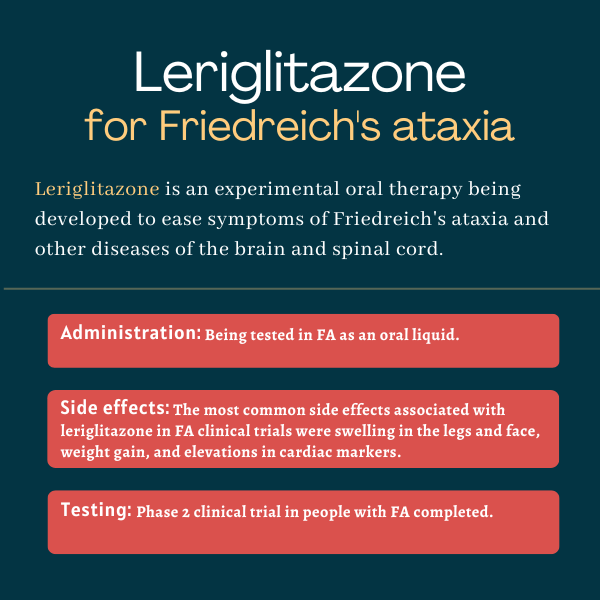 Discussion
Discussion
FAQs about Leriglitazone
A Phase 2 clinical trial testing leriglitazone in people with Friedreich’s ataxia has been completed, but it didn’t meet its main efficacy goal. Because the safety and efficacy of leriglitazone haven’t been fully established, it’s not known if or when the treatment will be approved in the U.S.
An experimental therapy not yet approved for Friedreich’s ataxia (FA), leriglitazone is designed to increase cellular energy production, which is deficient in FA, thereby easing symptoms of the disease.
Existing clinical trial data don’t mention an interaction between leriglitazone and alcohol, however, the treatment is still in early stages of development. More information is needed about leriglitazone’s potential interactions with other substances.
Leriglitazone is still in the early stages of clinical development, but existing clinical trial data didn’t find a benefit of the therapy in Friedreich’s ataxia (FA) patients over a year of treatment with respect to spinal cord atrophy (wasting), a measure that’s thought to correlate with clinical disease progression. Data on secondary measures, however, suggested a potential benefit of leriglitazone regarding metabolic biomarkers and in preventing a decline in upper limb ataxia after 48 weeks of treatment. Additional clinical trial data will be needed to further establish the potential benefits of leriglitazone in FA.
The most common side effects associated so far with leriglitazone in clinical trials include swelling (edema) in the legs, face, or other areas, along with weight gain and increases in certain cardiac markers. These side effects are consistent with the known safety profile of PPAR-gamma agonists, the family of molecules to which leriglitazone belongs.
Related Articles
 Fact-checked by
Fact-checked by 



